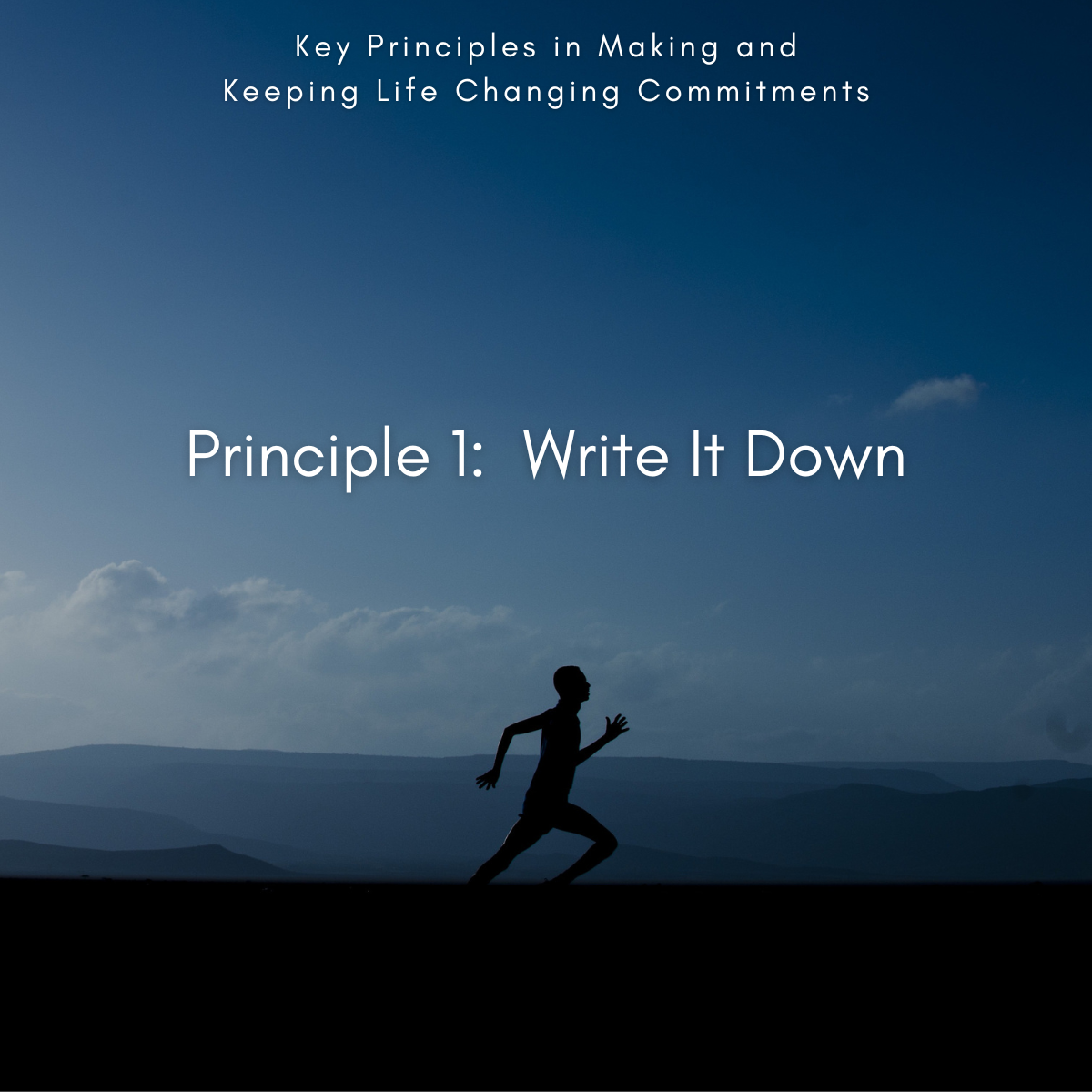When I wake up in the morning, the first thing that I do is brush my teeth. It is one of those automatic habits ingrained in me since childhood. Wake up. Brush Teeth. Waking up is the trigger, and brushing my teeth is the action. This is a habit that most people keep and really do not have a problem remembering to do so. The act of brushing your teeth is something you do when you are in autonomous mode. This is a crucial and critical consideration. When undergoing a personal transformation journey, we must replace the bad things we do on autopilot with good things. The way this happens is by focusing on triggers.
Triggers are something that you easily identify and happen at the same frequency as the habit you want to achieve. To provide an example, I want to drink more water every day. Drinking about 128oz of water daily would be a great habit, but how? I can identify some behaviors that I automatically do every day and try to figure out how I can make those triggers. So now I always fill up a 16oz glass of water and put that right next to my toothbrush. When I wake up in the morning and finish brushing my teeth there, I see the full glass of water. That is my trigger. So, every day now, the first thing I do when waking up is brush my teeth and drink a full glass of water. To further extend this example, I put all my supplements in a small dish next to that glass of water the night before. So here is the path. Wake. Brush. Drink. Supplements. Each action triggered the next, and now I remember. Four healthy habits that I do on complete autopilot.
To see my video on this subject click here.
This extends beyond our personal transformation into the business world. We can train people, give motivational speeches, and build accountability reviews. Still, if people in the business revert to bad habits, then progress will be slow. Bad habits form in a business all the time. People will learn to do things automatically without thinking about what they are doing. Some of these habits can be destructive to the organization’s desired outcomes. Saying yes when we should say no. Dropping the price when we should be adding value.
An excellent example of using triggers to replace bad habits with good ones would be scheduling client meetings. When I got a client meeting, I just scheduled it and moved on. Over time, I noticed that I would be scrambling to remember the details about the client before the call started. I would also feel unprepared and wish I had talked to others before I held the call. After the call, I would have good intentions of following up on all my promises. I would forget one or two of them; inevitably, the one I forget is the one most important to the client. To remedy this, I started automatically triggering two other meetings every time I calendared a client meeting. I would schedule a preparation call three days in advance and an after-action review call right after the client meeting. The triggering event was creating a client calendar item. In short order, I built a great habit of scheduling time to focus on preparation and review.
Triggers are the shortcut to overcoming our mindless paths during the day. Everyone does this. You just start ‘doing your thing,’ and the next thing you know, you have fallen back into the poor habits of your past without even being consciously aware of the fact. Imagine if that same thing occurred, yet the habits were healthy instead. Well, that can happen. For example, I have built a practice of running every morning. There are many days when I find myself running my neighborhood course. I suddenly become conscious of what I am doing and realize I have gotten out the door without one complaint from my primal brain. Effectively, I have a trigger system that kicks in the morning and gets me dressed, and then when I walk into my office, I set up a bench with running shoes and running stuff. I immediately sit down and put on the shoes, and my following action is to walk out the door. I have done that so many times now that it just happens.
Another tactic is identifying the triggers that cause you to slip and do destructive things. An excellent example for me is watching a show. When I sit down to watch something with my family, that is a trigger for me to consume some salty or sugary food. Before I knew it, I had consumed far more calories than needed because I had gone into mindless snacking mode. I feel like I need something to do while sitting in a chair and watching something. It must have been built into me as a child; perhaps I remember doing this with my parents, which is what I learned relaxing is. So, instead of letting myself be a salty snack zombie, I can use this trigger to replace it with a healthy behavior. So lately, I have been trying to drink a large glass of ice water with crushed ice and some fruit. I have noticed that fruit that requires work, like peeling something, works better. I kept myself busy rather than sitting there and thinking about the cookies in the pantry.
This is an event-based trigger. Sitting down to watch TV, drink ice water, and eat fruit. However, there are many other types of triggers that you can consider in your self-improvement quest. Here are the four that I have discovered:
- Time-Based Triggers: These are cues based on a specific time of day, such as waking up, meal times, or bedtime.
- Location-Based Triggers: These are cues based on where you are, like your workplace, home, or the gym.
- Event-Based Triggers: These are cues linked to specific events, like receiving an email or finishing a meeting.
- Emotional Triggers: These cues are based on your emotional state like stress prompting you to practice deep breathing.
- Visual Triggers: Visual cues like sticky notes or symbols placed in strategic locations can be reminders.
As you contemplate your daily routines, think through each of these cues and consider if that might be a good trigger for one of the healthy habits you are trying to implement. This is a mindful exercise. You are actually thinking about your actions and consciously deciding to do something different.
However, changing behavior engrained into your autopilot self takes work. Expect to slip up. I will provide a few recommendations that have helped me establish better habits using triggers I create or identify. Starting small is the first and most important consideration. If you take on too much, you will not do anything. Instead, start with some minor improvements that you can make, and after some time, as your confidence increases, add more. Technology and automation can be beneficial as well, but be wary. You can spend a lot of time figuring out how to automate something and do nothing actually to learn the habit. I recommend building the habit first, over 180 days, and then considering ways for the habit to be easier to accomplish in a shorter time.
The last advice is to be patient with yourself as you mess up. Do not beat yourself up. Understand what went wrong and why and set out to get it right the next day. Above all, be persistent. Keep at it for a long enough period, and before you know it, you will have many really awesome habits that you do every day. The hardest habit to break is the internal emotional ones. I have a habit of feeling anxious when I am not engaged in something. Rather than allowing myself to take a break, I sit around and stew on the fact that I am not doing anything. This is a horrible emotion that has always haunted me. I am working on using that emotion to trigger behaviors that can help me feel better. However, this is a work in progress. Keep at this concept of associating good habitual behavior with triggers. You will soon have stacks of good habits that propel you throughout the day and make you a highly effective human being.




